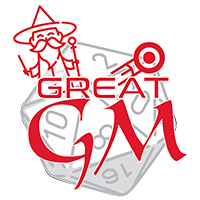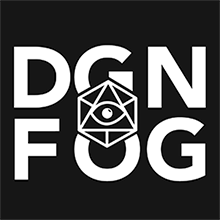Life on the Isle of Man
Eillan Vannin (“The Isle of Man”), despite the wealth of political and military interest
in it, is not particularly large (being only 33 miles long, and 13 wide, with a total area of 150,400 acres, and a small islet called “The Calf ” off the southern end) and it has a small population
(around 7,000 in 1220 AD). It is, however, both unusually fertile (both agriculturally and magically), and militarily significant (being in a commanding position in the Irish Sea). Indeed Man is not more than 30 miles from any of the surrounding countries: 27 miles from Cumberland, England; 15 miles from Galloway, Scotland; 29 miles from the Irish coast; and 23 miles from Anglesey, Wales (for Hermetic magi, only Scotland is therefore within range of a Seven-League Stride spell — but the rules might be bent here for simplicity).
Geologically, the island is largely hard shale and slate, with only a few exceptions: red sandstone on the west coast around Peel, a granite outcropping in the southern uplands, and white limestone on the southeast around Castletown. Physically, the island is composed of two mountainous highland regions of over 1,000 ft — one to the north, and one to the south — with a swampy region (curragh mooar — “the great bog”) between the two, straddling the parishes of German and Braddan. . Great King Orrey’s Road, the only real road on Man, marks the only known safe route through the bog, without detouring around it; this road was built by Godred Crovan (“Great King Orrey”) and stretches from Ramsay at the north to Castletown at the south.
Much of the agriculture on Man is sheep-grazing in the hills and fishing around the coast, but there are some flatter coastal regions suitable for arable farming and cattle. Most of the farmland on Man and the Isles is below 600 ft; the land above this and the inland wilderness areas are not owned by anyone, and is communal land. Like the Scots, Irish, and Norse, the Manx practice transhumance for sheep grazing (taking their flocks to elevated “summer pasture” in the summer, and back down to the valley floors in winter) — in Scotland and the Hebrides, the summer pastures are known as sheilings, but on Man they are earys.
The Manx People
The Manx inhabitants are a mixture of Celtic and Norse people. Mostly, the Norse are the wealthier landowners, and the Celts are the peasants — but there are many exceptions to this rule, especially in the South, which was given to the Celts to rule by King Orrey. In terms of appearance, both the Celts and the Norse are both “tall and fair”, with the Celts having a slight predisposition for red hair and green eyes. The Manx and the Hebrideans are therefore fairly mixed (being what is referred to by the Irish as gallGaels, or “foreigner-Gaels”), with a significant number of darker, shorter people, from the occasional English and Welsh settlers over the centuries. For their clothes, the noblemen wear a long tuniccalled a leine, with an over-cloak called a brat. The leine is usually of linen, but the wealthy might own one of silk; it might be either white or dyed and is often embellished with embroidery. The brat is woolen, and usually brightly-dyed with a decorative fringe, and fastened at the breast with an ornate brooch. Noble women wear a sleeved shift, or underdress (usually of linen or wool), with a woolen overdress. The shift is usually of linen or wool, and is often pleated, and high at the neck, secured by a brooch. The over-dress is brought up high under the arms, and two straps come over the shoulders, secured by two brooches or buckles at the front (from which small items like scissors or knives might be hung). A cloak might be worn over this if needed, or a tunic might be worn between the over- and under-dresses; all of these garments might be dyed and more or less ornately decorated, depending on the wealth of the woman’s family. Jewelry of jet, amber or silver is common for both sexes: rings, pendants, crucifixes (for Christians), and stylized hammers (for followers of Thor). The common men would wear tight woolen trews, a short jacket (often sleeveless), and a short over-cloak; an over-kilt might also be work in colder weather. Common women would wear a plain leine, with a mantle or shawl worn over, and either braided hair (for unmarried maidens), or a head-scarf (for wives). The Manx subsist by a mixture of fishing (mostly for herring) or farming (livestock or arable), and their pastimes include shinty and a draughts or chesslike game called Fichell (also known as Gwyddbywll or “Wooden Wisdom”), in which one player is the defender, trying to get his king to safety, and the other is the attacker, trying to capture the opposing king. The houses of Manxmen will vary substantially in quality depending on the wealth of their occupants, and most buildings are in the style of Norse longhouses. Poorer dwellings will be constructed of wattle-and-daub, while wealthier families might have homes with walls built entirely of stone. In either case, most will have but one floor and one room, and the roof will consist of thatched rushes or turf. Most families with livestock will have their animals living in the same building as them (except for sheep, which will range over the hillsides), especially over winter, when the extra source of warmth would be welcome. Windows would be practically unknown in such buildings, and there would be no chimney — so smoke would have to escape through the door.Languages
Manx Gaelic, as spoken by the Celtic peoples on Man, is a mixture of heavily-accented Scots/Irish Gaelic (Goidaelic) with some Norwegian (western) Norse. In game terms, it is not a separate language in itself — and anyone speaking either Goidaelic or Norse will be able to get by on the island, as the landowners still speak Norse for political and legal matters, and almost everyone on the island is bilingual anyway.
Characters in Location
Remove these ads. Join the Worldbuilders Guild









Comments